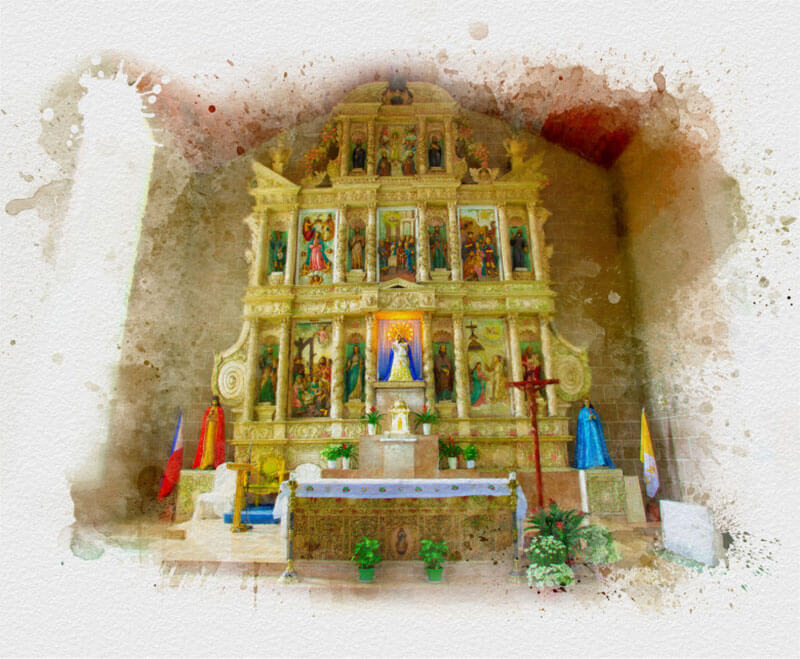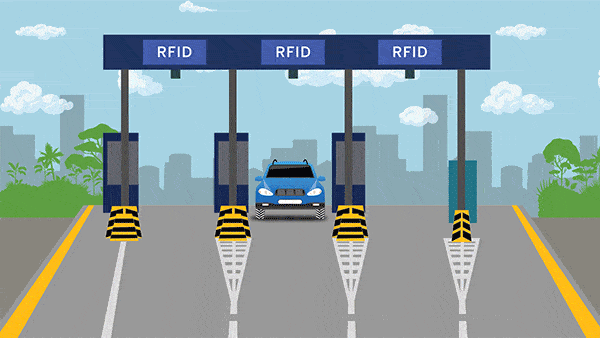The Silang Church’s retablos are testament to Filipino creativity and resourcefulness, as they incorporate indigenous and local elements in the colonial art. The main altar depicts the story of Jesus in the life of Mary, while the much-revered image of Nuestra Señora de Candelaria — the patroness of Silang — occupies the central niche of the first level. The church and its retablos were declared a National Cultural Treasure by the National Museum of the Philippines in 2017.
Did you know?
The Our Lady of Candelaria Parish, also known as the Silang Church, is the oldest standing church in Cavite. Founded in 1595, the church’s present structure was built from 1637 to 1639.
Why Is The Silang Church So Special?
One of the oldest churches in the country, the Our Lady of Candelaria Parish Church — also known simply the Silang Church — is famous not just for its rich history, but its impressive baroque-style retablos.
The Silang Church was founded in 1595 by the Franciscans, who built a chapel and school using light materials. This first structure, however, was destroyed by a fire in 1603. By that time, the Jesuits were assigned to Silang, and the present stone structure was built from 1637 to 1639 under the leadership of Father Juan de Salazar. It was dedicated to the Nuestra Senora de Candelaria in 1640.
Unlike other Jesuit churches built under the auspices of Father Salazar in Antipolo and Tanay, the Silang Church has a simple facade without any intricate ornamentation. This was largely due to the death of Father Salazar in 1640. The church’s interior is similarly stark, with high-placed small windows and simple pilasters.
The Silang Church Retablos
The Silang Church itself may not be the most majestic in the country, but its 17th century retablos are nothing short of awe-inspiring. Commonly found in old Roman Catholic churches, a retablo is an intricately carved multi-tiered altarpiece. This structure is usually embellished with decorations such as scrolls, rosettes, and cherubs.
Typically made of wood, retablos boast elaborate ledges and panels, as well as multiple niches for images of saints. The topmost niche is usually reserved for the church’s patron saints, while the lower niches are occupied by saints affiliated with the church’s religious order.
Built from 1643 to 1663, the Silang Church’s retablos are testament to Filipino creativity and resourcefulness, as they incorporate indigenous and local elements in the colonial art. The Silang Church has three retablos: one retablo mayor (or main altar) and two colaterales (or side altars). The altar mayor depicts the story of Jesus in the life of Mary, based on the mysteries of the Holy Rosary. The much-revered image of the Nuestra Señora de Candelaria, the patroness of Silang, occupies the central niche of the first level.
The Image of the Virgin of Candelaria
Legend has it that the image of the Blessed Virgin Mary was discovered by a Silang native named Andres in 1640. Andres found the painting. After seeing the image, another native asked Andres for the image, and Andres handed it over without hesitation. The image drew many devotees, and so a tabernacle was built.
In 1643, the native left Silang and forgot to pay tribute to the image, and upon his return to the town, the image was nowhere to be found. After pleading for forgiveness, he searched high and low for the image, and found it. However, the image would disappear again nine more times over the next few years. A Jesuit rector advised him to bring the icon to the Silang Church, which is where it remains until this day. Today, the image is celebrated every year in a procession and festival every February 1 to 3.
How to Get to Our Lady of Candelaria Parish
Head southwest on CAVITEx. After the Binakayan-Kawit Toll Plaza, take the exit toward Covelandia Road. Continue for 750 meters and turn left towards NIA Road. Continue onto NIA Road and turn left onto Carsadang Bago. Continue for 1.1 kilometers, then turn right onto General Yengco Street. After 1.2 kilometers, turn left onto Tamsui Avenue. Turn right onto the Aguinaldo Highway. After 20.5 kilometers, with Better Living Tile and Bath Center to your left, turn left. Continue for 1.5 kilometers onto J Rizal. After 500 meters, turn left onto MH Del Pilar. Turn left at the second intersection onto V. Toledo, then turn left onto J Rizal. Our Lady of Candelaria Parish Church will be on your right.



